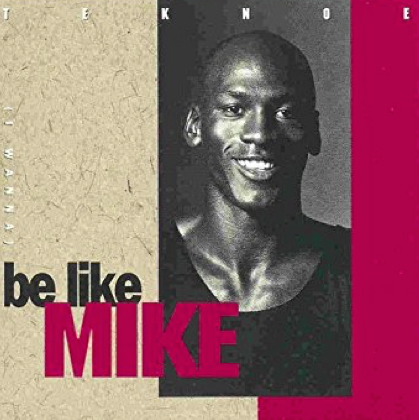Digital Strategist, keynote speaker / author at Mastering Digital Strategy
After the recent Digimarcon conference and by popular request, here’s the presentation on why digital marketing is broken and what marketers must do about it…
The challenge:
How do I, in only a few minutes, get an audience full of savvy marketers to see a massive problem in today’s digital world so that yes, they can fix it…because bluntly, if they don’t they might be all too soon on the chopping block…
The answer:
Tell a story…
When I was a kid, I played all kinds of sports but nothing was quite the same as the game of basketball. Basketball took the spot of prominence because it was there that I had my idol…Michael Jordan. That man was an icon and probably most of you remember the classic Nike commercial slogan: Be Like Mike. Oh, and how I wanted to be just that…like Mike. To jump, to dunk, to score, to lead, to win. He was the ultimate personification of excellence.

And what did they do to make me want to be Just Like Mike? Simple: Buy his basketball shoes. Air Jordan’s – how cool those made you. I believed – and I mean seriously believed that if I had that year’s Air Jordan’s, I’d be a better basketball player? Was that true? Of course not BUT every year, I NEEDED those shoes. Year in and year out, I waited and waited for those new shoes to come because if I had those “new things” I would…of course…be better.
And here we are…Digimarcon 2017: The premier digital marketing conference. Bluntly, I believe that most brands today think just like I did when I was a teenager. If I only have the latest and greatest, I’ll be the best.
Did shoes make me a better basketball player? NO
Will the latest digital thing of the day make you a better marketer? Same answer…NO
What’s worse, brands keep dreaming and praying and hoping that the latest “Air Jordan’s” will make them an all star but they’ve totally missed the point that just like with basketball, since Jordan retired, the entire game has radically changed. It’s not played like that anymore, the coaching strategies, game strategies, rotations, talent pool and so on has totally changed.
Same exact thing with marketing: digital has totally changed the way the game is played and if you don’t get that, you’ll be chasing the tactics of the day, showing up for the game but like me as a kid, you’ll still be a crappy ball player with really fancy shoes.
There’s 2 things I want you to understand:
- How marketing has changed because of digital
- How if you get the new game, you’ll seriously belong at the C-level and dominate the world of digital marketing
On that point: I’ve worked in an agency, I’ve ran and owned an agency and constantly both agency and brand side marketers are always talking about (I said talking but I really mean whining) how marketing is not a cost but an investment, how marketing belongs at the C-level, how marketing needs respect.
But it doesn’t happen…Why?
Because frankly, we’ve made it a total mess:
Think about our host today, Derek Lackey. He’s the market specialist on CASL (Canadian Anti Spam Legislation) Ever stop to wonder why we have CASL? Simple, because marketers screwed it up and abused e-mail marketing.
Think about our second speaker, Joan Brehl. She’s the President at the Alliance of Audited Media; an organization dedicated to providing real digital reporting based on the rampant issues of mis-reporting, bot traffic and so on. Ever stop to wonder why we need real reporting? Again, simple, because marketers screwed it up and weren’t honest.
Step back for a second:
Marketing’s core goal has remained the same: it’s about forging a relationship of trust to enable changed behavior of an audience (buy more, do more, endorse more, etc.)
Similarly, basketball’s core goal has remained the same: score more points in the allotted time vs. the other team.
But here’s why we have a massive problem:
In 1905, The University of Pennsylvania launched a course: the marketing of products. From that, marketing thought evolved and gave birth to the classic: the 4 P’s (developed by E. Jerome McCarthy: Product, Price, Promotion, Place)
Then, you see the massive eras of prominence: print, radio, TV, guerrilla, DM, IMC but look carefully: each one of those tactics or channels were one directional: we as marketers got to talk AT the audience.
Consumers listened to radio, watched TV, read print, etc.
In and around 2000, the dot-com era began to bloom and as marketers we were shoved into the budding realm of digital –marketers simply digital as the latest “Air Jordan” and without it, we’d fall behind.
Then in 2004, 2005, 2006 the digital social powerhouses showed up: Facebook, YouTube and Twitter and again, we raced to get those…or we’d fall behind.
The slippery point of course is as we were getting the latest “fancy shoes” of the day and layering them with enablers like Hootsuite, Automation and whatever, we missed the point that we can’t play marketing in a ONE-WAY strategy anymore because digital is a TWO-WAY game.
The game changed but we’re still trying to use out of date strategies and guess what, they don’t work.
Want proof?
US Retail industry spent $23.5 Billion in 2016 on digital marketing AND it’s forecasted by Forbes to be $120 Billion by 2021
And add to that, since 2008, Ad Week looked at digital revenue in agencies and it’s grown from 25.8% of total revenue to over 40% of total revenue in 2016.
So yes, there is a massive increase in digital investment and spend and we’re all clamoring to catch the latest and greatest; We chase video or influencer marketing or, it’s not copy but it’s context or, automation and programmatic or, it’s not Facebook but Instagram or, perhaps Twitter or…but again, look at the TRUTH.
Forrester took the top 50 brands (Nike, Coke, IBM, Toyota, McDonalds, etc.) and evaluated over 11 million digital engagement points year over year:

- The volume via Twitter, FB, Instagram DOUBLED (that’s the noise marketers are making)
- The follower counts DOUBLED (that’s the people / consumers who WANT to connect)
BUT
The engagement: that’s the actual consumer connecting with the noise from the brands…
- Twitter -10%
- FB +5% (but that’s only because of paid)
- Instagram -50%
- Google+ -35%
To put that into common sense language:
The average engagement score 2 years ago was less than 1%.
The average engagement score last year was half of that: 0.5%
Just imagine: if as a husband, I listened to and engaged with what my wife was saying 1% of the time, how’s the relationship doing?

A few other supporting thoughts:
For you agency folks: Accenture study: only 6% of brands see their agency as a solution to their digital needs and that because of that, at least 50% of brands will be switching agencies in 2017
For you brand folks: Forbes cites that 70% of brands believe they DO NOT have an effective digital strategy while at the same time digital is on the top 3 priorities of CEO’s today
Marketer: Your role hangs on your ability to satisfy business objectives through consumer / target audience engagement. So far, we’re getting a 1% on our scorecard. The digital world is here. The transformation is happening but know this, if you simply keep throwing new “Air Jordan’s” (and of course I mean the latest digital tactics) at the problem, you’re in serious trouble.
I’ll close with this:
Digital is to marketing as Gunpowder was to war.

Ghengis Khan, Julius Ceasar – absolute masterminds of warfare.
They ruled and dominated the known worlds during their respective reigns. And when they fought their battles, they brought spears, shields, horses, chariots and the like. One army on one side, one on the other. At “go” they just smashed into each other and the group with the bigger war machine won.
And then, gunpowder came on the scene: enter cannons, rifles, etc. BUT…even with new weapons at their disposal, wars for a time were still fought like pre-gunpowder wars: One army on one side, one on the other. At “go” the just lined up and smashed into each other. (They were fighting the war with new technology but using old approaches)
But military generals started realizing that with this new world of warfare, we need to fight in a new WAY. No more lining up and smashing: new strategies, new approaches, new systems.
Same with digital. It’s changed the way we need to market.
Hey marketer: You want respect and leadership and to make positive change?
Stop fighting the war like your ancestors did. Stop buying the latest “Air Jordan’s” and hoping upon hope that this time, it might just work.

There are 4 key things that you need to know how to do if you want to actually succeed in our digital-first world:
- Strategy (pre-digital strategies will NOT work)
- Digital-first profiling – not traditional personas that let you talk AT an audience but rather, digital-first profiles that enable talking WITH
- Relationship-based content: want to have your audience engage more than 1% of the time…you better learn what to say and how to say it
- Analytics: measure it: know what to measure, how to measure and what to do with what you’ve learned.
Before change happens, three things occur:
Information. Inspiration. Transformation.
You have the information that what we’ve been doing isn’t really working.
You have the inspiration that unless we fix it, we’re going to be eliminated.
You now have access for the transformation through two things:
- Email me directly for the full white paper on Strategy, Profiling, Content and Analytics (k.adema@emissaryinsights.com)
- Get trained on how to actually do it via the Mastering Digital Strategy program.
The marketing world has changed forever because of digital…stop buying fancy shoes.
The above is an excerpt from the Digimarcon conference: a 4-part presentation on The Current State of Digital Marketing hosted by Derek Lackey, President of the Direct Marketing Association of Canada and included Carolyn Tracy, Director of Direct Response Marketing, Sun Life Financia, Joan Brehl, President of the Alliance of Audited Media and Kevin Adema, President of Emissary Insights and Lead Author at Mastering Digital Strategy.
























































































